 4 Columns
4 Columns
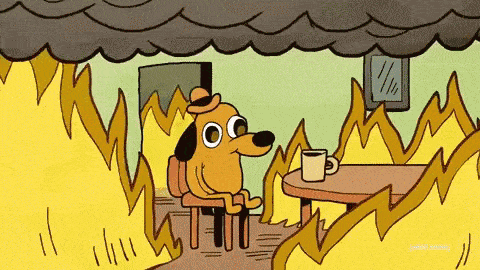
4Columns returns with a new issue on September 4. In this week’s summer missive, we indulge in doomsday fantasies by revisiting books, a film, and visual art that picture (or even seem to augur) the end of times.
• • •
A deadly virus engulfs the globe, climate change continues unchecked, the Trump administration grievously mismanages both—all the while stoking the social injustice and economic inequality that rages throughout the US. It’s no wonder people have doomsday on their minds. But is there something homeopathic about representations of the apocalypse? Perhaps through them we might inoculate ourselves, if not against the event itself, then against the experience of living through it? Whether a reflection of a frightening reality or an attempt to prepare ourselves for an even worse one to come, art that takes on the world’s end is widespread, as a tour of our archives reveals.
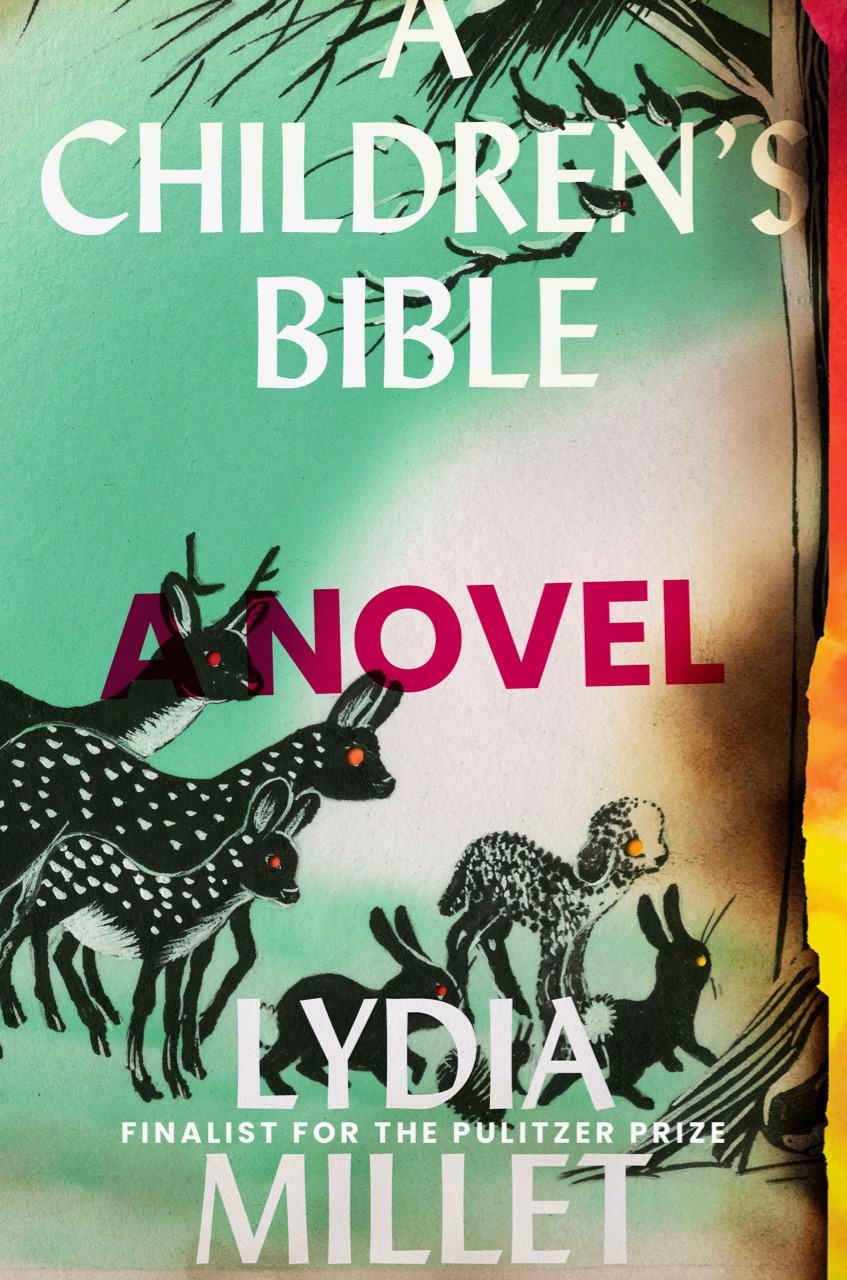
A Children’s Bible, by Lydia Millet
Reviewed by David Ulin
A Children’s Bible tells the story of a teenage girl named Evie whose parents join a group of college friends and their families in a large summer house for an extended reunion. The adults engage in what one ironically calls their “last hurrah,” leaving their mostly adolescent children to fend for themselves—a situation that turns grave when a Category 4 hurricane hits ground and a host of climate cataclysms ensue. Evie and her compatriots flee inland to a farm, while their parents remain in the house, increasingly overwhelmed by the unfolding disaster. One, a pregnant mother, seeks out her daughter and dies in childbirth in front of the youths, an event that is relayed in bluntly dispassionate terms. As reviewer David Ulin observes, “we have reached the point where resistance or denial is no longer possible, where we must accept what happens if we don’t want to be subsumed by loss and grief. . . . It’s essential that we recognize what Millet is addressing, which is more than extinction, but adaptation.”
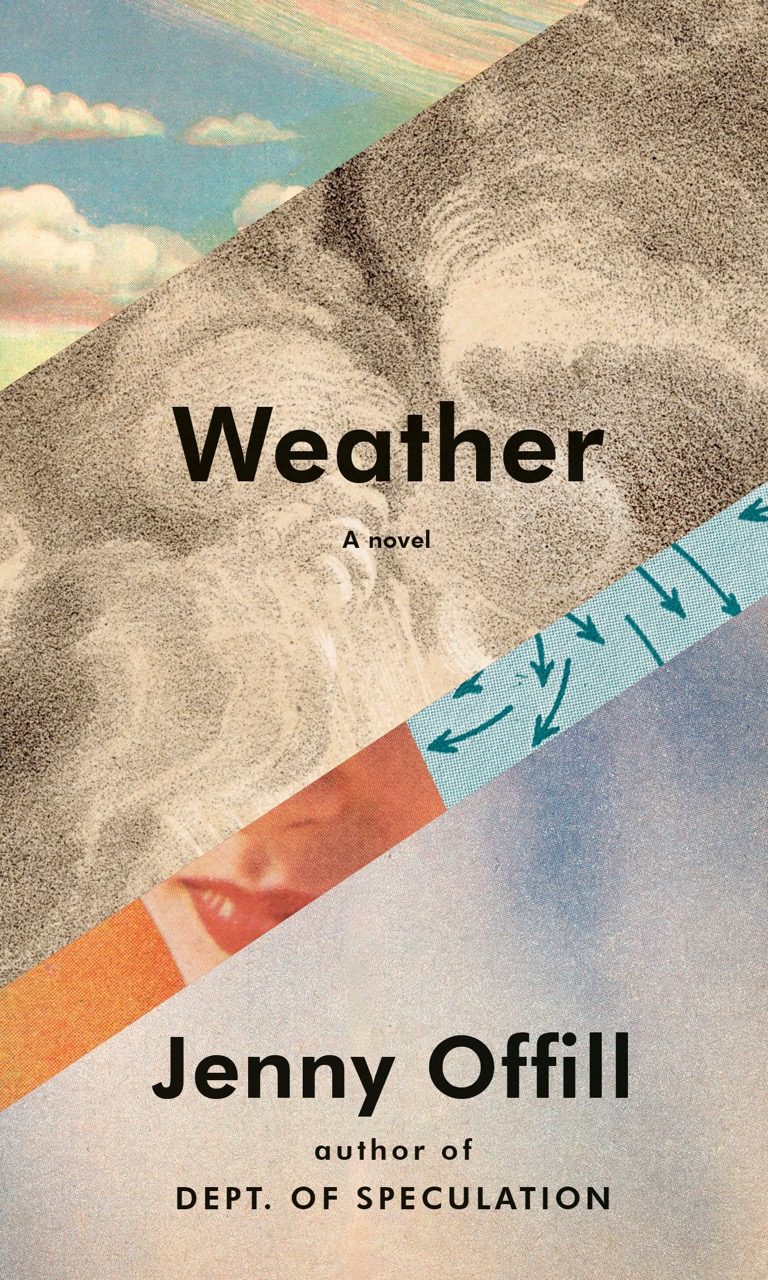
Weather, by Jenny Offill
Reviewed by Jessi Jezewska Stevens
Adaptation is a similarly urgent concern for Lizzie, the narrator of Jenny Offill’s Weather—the follow-up to her critically acclaimed Dept. of Speculation. A mom, grad-school dropout, and part-time librarian, Lizzie takes a second job answering fan mail for the host of an apocalyptic podcast. Quickly converted to a belief in imminent ecological cataclysm, she balances her time between the small dramas of everyday family life—will her child test into a top middle school? where are the brooms in the dollar store?—and anxious reflections on how to start a fire with a battery and a gum wrapper and whom she should invite to her doomstead. If Dept. of Speculation—the story of a marriage’s unraveling—was tightly focused on the personal, Jessi Jezewska Stevens writes that “Weather is an important reminder that ‘domestic’ fiction is eminently suited to addressing social and ecological, as well as familial and personal, apocalypse. Offill has agilely coordinated many of the forces hastening destruction—indifference to relocation efforts, rejection of refugees, plutocracy—and counterbalanced them with a parent’s visceral, helpless anxiety for the next generation.”
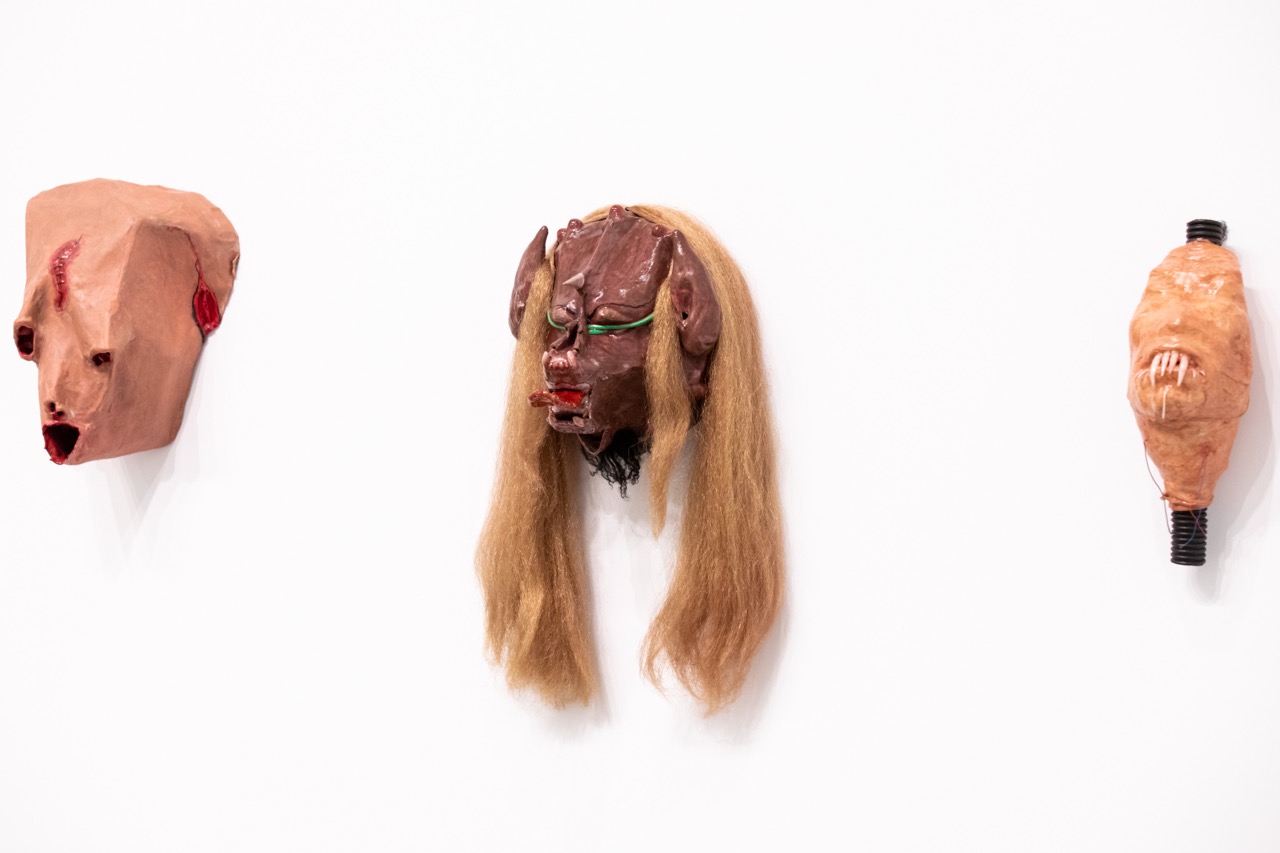
Huma Bhabha: They Live, installation view. Photo: Natasha Moustache.
Huma Bhaba
Reviewed by Aruna D’Souza
A major Huma Bhabha exhibition last year at the Institute for Contemporary Art/Boston showcased sixty-two figures that could easily inhabit the end of the world. As Aruna D’Souza observes, Bhabha’s self-consciously “primitive” sculptures embody a cast of “aliens, golems, Frankensteins, cyborgs, and DIY androids.” These disturbing creatures are composed of an eclectic hybrid of materials, ranging from clay and plastic tubing to fiber and electrical wires. The artist often juxtaposes the natural and inorganic, as in a suite of nine totem-like figures made of cork and Styrofoam. The “acrid, musty smell of cork,” D’Souza notes, “lends a kind of immediacy to the work” that powerfully confronts the viewer. Bhabha has been quietly crafting her sculptures since the early 1990s. Musing on her recent visibility—as evidenced by the ICA/Boston retrospective and a 2018 rooftop commission for the Metropolitan Museum of Art—D’Souza hazards a suggestion: “Perhaps this is because we’ve caught up with her apocalyptic (but not humorless) vision of the world: as we all watch with horror while our planet falls apart, Bhabha’s art feels increasingly suitable to our time.”
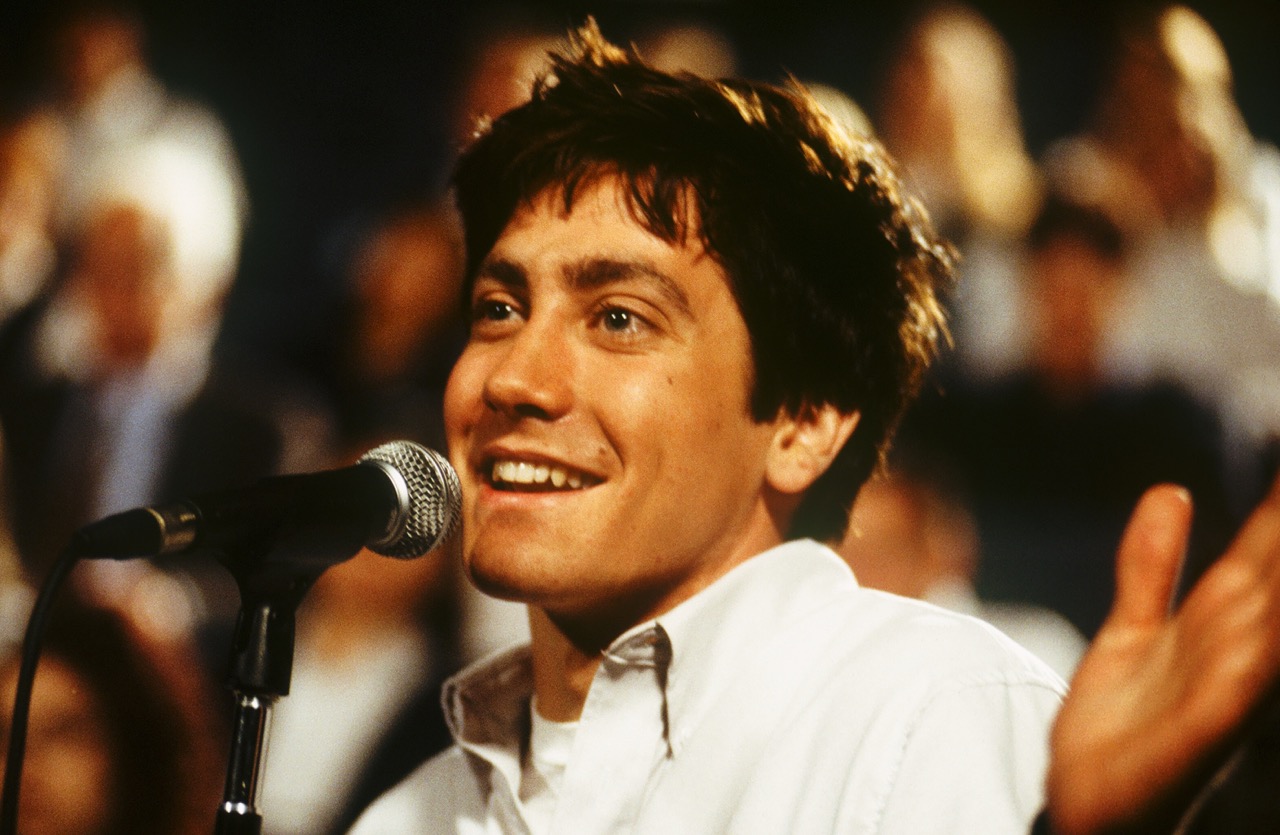
Donnie Darko, directed by Richard Kelly
Reviewed by Amy Taubin
Set in 1988, Richard Kelly’s 2001 debut feature film, the cult classic Donnie Darko, stars a fresh-faced Jake Gyllenhaal as a teenager living in a late-Reagan-era suburb. Pointing to the larger fate of the nation, two fundamentalist teachers have infected Donnie’s progressive school with their right-wing ideology; they, along with a couple of classmate bullies, are his main earthly adversaries. But Donnie has bigger fish to fry in this movie that mashes up adolescent drama with a sci-fi vision of the apocalypse: Donnie is called upon to sacrifice his life to stop a world-ending rift in the space-time continuum. Or is he? The film, which takes place entirely from Donnie’s perspective, can be read, according to Amy Taubin, “not as science-fiction but as a dream—a projection of the psyche of its hero, who understands, however inchoately, that the eighties world of Reaganite politics and new-age fundamentalism is a dangerous place for himself and the people he loves. Or to be less mystical, Donnie could foresee the lethal long game of the radical right.” That long game—now an endgame—has become our own apocalyptic reality.